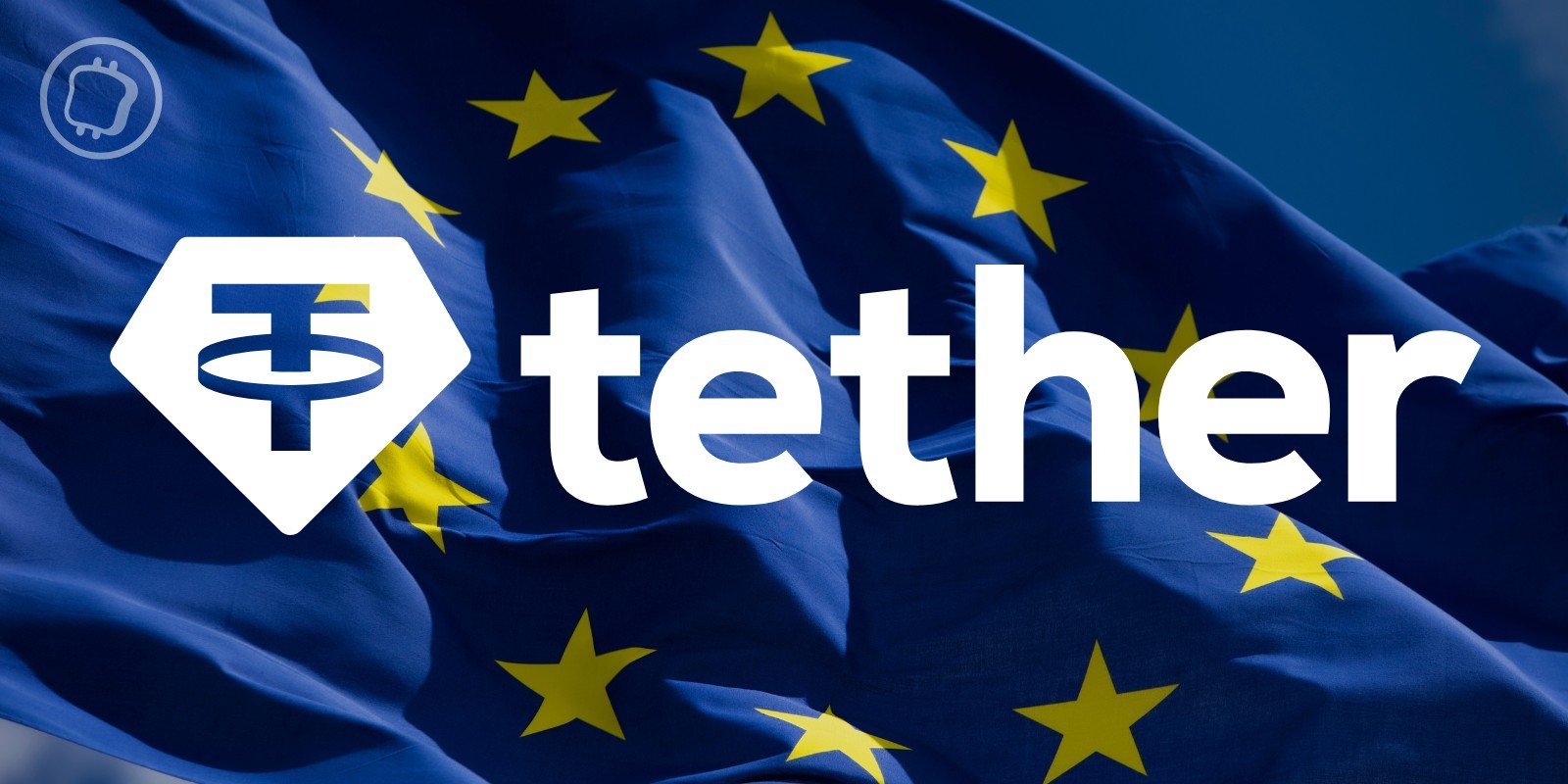The CEO of Tether, the USDT issuing company, Paolo Ardoino, discussed various topics related to the cryptocurrency sector, including the European regulation, MiCA, with The Big Whale media. He criticized European regulators and said Tether would not comply with these new laws, which could lead to their stablecoins being removed from European exchanges.
Tether has decided not to regulate itself in Europe
During Paris Blockchain Week, Paolo Ardoino, CEO of Tether, discussed various hot topics in the cryptocurrency world with media outlet The Big Whale.
During this interview, Paolo Ardoino was particularly pessimistic about the future of companies in this sector within the European Union and strongly criticized the MiCA law, which will enter into force in June 2024.
MiCA is too strict a regulation for him to try to slow the adoption of dollar stablecoins in Europe by taking “risk of stifling innovation” and by hindering new services developed on blockchain infrastructures.
👉 Find out more – MiCA: European regulation proposal for crypto-assets
Paolo stated that Tether may have chosen not to comply with European Union regulations due to overly strict restrictions by MiCA. This decision could force European exchanges to remove USDT from their platforms.
Indeed, legislation requires that 60% of stablecoin issuers’ reserves be held in liquid form in a bank account.
It points out that this requirement greatly reduces repayment flexibility for its customers and creates another risk: the risk of bankruptcy..
If a bank holding a significant portion of reserves were to fail, Tether would risk losing some of its funds, while allocating most of its reserves to bonds is considered safer and reduces the risk of losing funds.
In addition, MiCA imposes a division of reserves between 6 to 12 banks, depending on the total amount of funds. Paolo Ardoino suggests that it is already difficult to find a bank in Europe that accepts transactions in the cryptocurrency sector, so finding between 6 and 12 banks that allow it seems practically impossible..
After the interview was published, the CEO wanted to correct his statements in a post on the X social network.
Just to correct the statement: we are still discussing with the regulator our concerns, which I expressed in our conversation, which would pose serious risks to stablecoins regulated in the EU.
Uninsured cash deposits are not a good idea.
We should learn from what happened to…
— Paolo Ardoino 🍐 (@paoloardoino) April 11, 2024
“To correct this: We are still discussing with the regulator our concerns that I expressed during our conversation, which would pose serious risks to stablecoins regulated in the EU. (…) We should learn from what happened to Silicon Valley Bank and another major stablecoin in the United States. If the bank fails, uninsured cash fails. »
Here, Tether’s CEO corrects his statements and says Tether continues to negotiate with European regulators. He also warns that keeping a significant amount of cash reserves in banks is very risky.
👉 Also Read in News – Uniswap VS SEC: Crypto Ecosystem Rallying Behind Exchange Platform
He cites the example of the USDC, which suffered a decorrelation against the dollar in March 2023 following uncertainty over the future of Circle’s funds. These were held in an account at Silicon Valley Bank, which filed for bankruptcy.
Coinbase: sign up for the world’s most famous crypto exchange
Source: The Great Whale
Newsletter 🍞
Receive a summary of crypto news every Monday by email 👌
What you need to know about affiliate links. This site may contain investment-related assets, products or services. Some links in this article may be affiliate. This means that if you purchase a product or register on a site from this article, our partner will pay us a commission. This allows us to continue to offer you original and useful content. Nothing will happen to you and you can even get a bonus using our links.
Investing in cryptocurrencies is risky. Cryptoast is not responsible for the quality of the products or services presented on this site and cannot be held responsible, directly or indirectly, for any damages or losses incurred after using the goods or services highlighted in this article. Investments related to cryptoassets are inherently risky, readers should do their own research before taking any action and invest only within their financial means. This article does not constitute investment advice.
recommendations of the AMF. There is no guaranteed high return, a product with high return potential involves high risk. This risk taking must be in line with your project, your investment horizon and your ability to lose some of these savings. Do not invest unless you are prepared to lose all or part of your capital.
To go further, read our Financial Situation, Media Transparency and Legal Notice pages.

